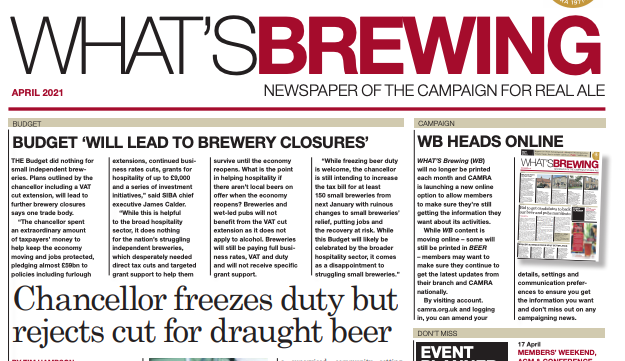Brewer wants to transform how ale is sold
Audio Description
Login here to listen to the audio description

Greene King wants to change the way the industry looks at the ale category with the launch of its proposal on How to Win with Ale.
The company’s vision embraces the importance and role of ale on the bar, the challenges and opportunities for the category and provides a new perspective on innovation, quality, and presentation for the industry.
With one in five pints of beer ordered in the UK being ale, which is twice that of stout, as a category it is a fundamental part of a credible beer offer for any bar and continues to see a strong demand by guests.
Cask ale is also the third biggest category for rate of sale of pints, with keg ale following in fourth, so it’s the category that sells well.
The brewer starts by looking at the sub-categories of ale with traditional keg, cask and craft and the role they each play on the bar.
Understanding the different areas and how these then match with the venue and guest profiles can ensure the range on offer is the most profitable.
Given that ale, especially cask, is unique to the pub it shouldn’t be a difficult category to engage current guests, however, if the basics aren’t right then it all falls at the first hurdle. Focusing on quality, education, and presentation, means venues will really get the most from their offering.
Drawing in on quality, cellar management needs to be at the forefront by maintaining a high standard and ensuring training is kept up to date. Greene King provides cellar training to its customers in person, with useful online guides through its Beer Genius online portal.
To address the challenge of a fresh, short shelf-life product like cask ale, the brewer launched its 4.5-gallon pins last year. The introduction of pins aims to minimise wastage and encourage venues with smaller throughput to still have cask on the bar, and even the ability to add further range with a lesser volume.
The launch of pins has had a great impact on growing cask, with overall stockists of the seasonal cask calendar up 20 per cent last year compared to 2022.
A Greene King spokesman said: “To really win with ale, it is also about giving the best customer experience, where guests want to have their ale in an appropriate branded, clean glass and presented in the best possible way. Providing that elevated experience is what guests now expect.
“To truly build a thriving future for ale and not just for the now, the industry needs to recruit new drinkers too and show that there is a world beyond lager, by addressing other barriers perceived with drinking ale and taking learnings from other categories that have managed to build that fresh appeal and image.
“Take gin for instance, a product that was once seen as an old-fashioned drink, with no range of flavour and nothing to really get excited about. Now walking into a bar there is a selection of brightly coloured bottles, flavours and garnishes all served in modern glasses. With this change in variety introduced, there has been a noticeable change in demand, so much so that gin is now worth more than £1.3bn in the on trade alone.
“Now, we aren’t likely to start putting mint or rosemary into our ale when serving a pint, but if gin can change its perception, then so can ale in its own way.”
Greene King on trade manager Angie May said: “The aim of our vision is to get the industry feeling the passion and motivation we have for ale and understand how to make the best out of it for now and make it successful for the future. Greene King wants to make it as easy as possible for our customers to win with ale and in turn seek the rewards from guests too.
“Where there is demand there is a need and we believe that it’s about getting it right now and making those changes for the future, that will provide profit for businesses and an exciting future for ale.”

 view archive
view archive
 view events
view events